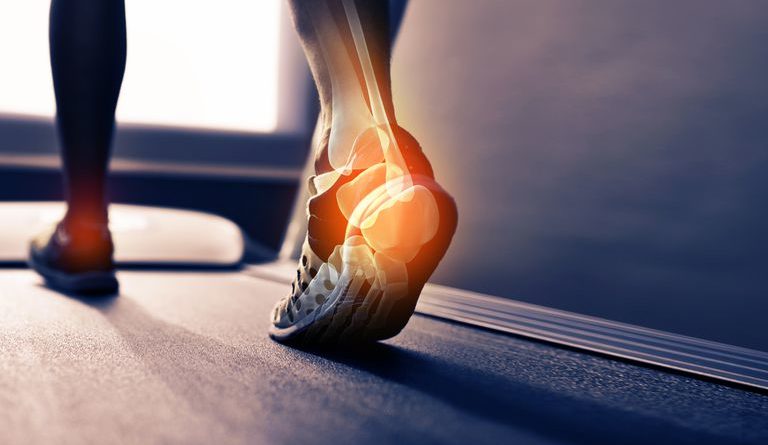All you need to know about foot and ankle injuries in seasoned players
by Dr Anup Khatri, Consultant- Orthopedics, Global Hospital, Mumbai
It is no brainer that sports are physical activities, and when things get physical, there is a possibility of one suffering from an injury. Overuse and acute sprain and strain injuries are the most common ones. An overuse injury may occur from excessive wear and tear of the body, especially in areas subject to repeated activity. The major joints of the body like ankle, knee, hip, shoulder, elbow and wrist joints are subjected to overuse injuries. A strain injury is where fibers in a muscle or tendon tear as a result of overstretching. A sprain injury involves the overstretching and tearing of ligaments. Thus, the main of these injuries can be kept at bay by suitable conditioning, sufficient warm up, wearing appropriate footwear and using correct techniques.
Here, we discuss in detail about the injuries suffered by the seasoned players:
Ankle injuries: They are defined by the kind of tissue – bone, ligament, or tendon which is damaged. The ankle is where your three bones meet that is the tibia and fibula of your lower leg with the talus of your foot and these bones are held together at the ankle joint by ligaments, termed as strong elastic bands of connective tissue responsible for keeping the bones in place while allowing normal ankle motion. Tendons attach muscles to the bones to do the work of making the ankle and foot move and allow the stability of your joints. Hence, an ankle injury occurs when the ankle joint is twisted too far out of its normal position. Moreover, an unnatural position of the ankle in high-heeled shoes or walking in unstable or sandals can also put you at the risk of ankle injuries. Furthermore, tripping or falling, landing awkwardly after a jump, walking or running on uneven surfaces, twisting and rotating the ankle can also lead to ankle injuries. One may exhibit symptoms like swelling, tenderness, bruising, pain and stiffness, if he/she is down with an ankle injury.
In case, you experience ankle injuries, you should opt for RICE treatment (Rest, Ice, Compression, and Elevation).
- Rest: It’s vital to rest your ankle to avoid further damage and keep weight off of it.
- Ice: It will reduce the swelling and ease the pain.
- Compression: Wrapping the injured ankle with an elastic bandage will help keep it supported and mobile. But, remember that you should avoid wrapping your ankle too tightly.
- Elevate: Here, elevating the injured ankle to at least the level of your heart will help you get rid of the pain and swelling.
How to prevent ankle injuries: You must avoid exercising or playing sports when you are in pain, increase your bone mineral density by opting for a well-balanced diet, keep your weight in check, wear the right kind of shoes, stay physically active, and warm up and stretch before playing a sport.
A fracture: Can be described as a break in one or more of the bones. Pain, swelling, bruising, immobility, discolored skin in the affected area, are some of the symptoms one may notice. It can be tackled surgically or nonsurgical. Your expert may treat you without surgery by immobilizing the ankle if only one bone is broken, and if the bones are not out of place and the ankle is stable. If the ankle is unstable, the fracture will be treated surgically. Not only this, your doctor will ask you to keep weight off the ankle during so the bones can heal in the proper alignment. Ligaments and tendons can take longer to heal after a fracture is fully mended. Thus, after your doctor has determined it is safe for you to start moving your ankle, you will be asked to opt for physical therapy to provide gait training, balance, strengthening, and mobility exercises.
How to prevent fractures: If your balance is poor, balance training and physical therapy is the need of the hour, don’t run on uneven surfaces, and wear correct footwear.
A sprain: Is damage to ligaments when they are stretched beyond their normal range of motion. Swelling, tenderness, bruising, pain and stiffness are some of the symptoms one may experience. The treatment of it will vary from person to person. It will depend on the severity of the injury. They are graded as mild, moderate, or severe. Mild sprains are dealt with the RICE approach for several days until the pain and swelling improve, and exercises prescribed by the doctor. Moderate sprains can be tackled by the RICE approach but will allow more time for healing. You will be given exercises to strengthen your ankle. Whereas, severe sprain involves a complete tear or rupture of a ligament and will require a lot of time to heal. It can be dealt with immobilization of the joint followed by a longer period of physical therapy for a range of motion, stretching, and strength building. Moreover, one will also be asked to undergo surgery for reconstructing the torn ligaments.
To prevent sprains: Stretch before and after you the physical activity, do special exercises to improve your balance recommended by the doctor.
A strain: Can be defined as damage to muscles and tendons as a result of being pulled or stretched too far. Did you know? Muscle and tendon strains are more commonly seen in the legs and lower back. Swelling, bruising, or redness due to the injury, pain at rest, weakness of the muscle or tendons, and inability to use the muscle at all, are the symptoms which one may exhibit. To tackle it, you can opt for the RICE approach along with exercises- simple stretches. Do not self-medicate as it can be risky. Take medications only after consulting your expert.
To prevent strains: One must opt for muscle training, stretching and stability training under the expert guidance to keep the muscles strong and flexible.
Turf toe:
Injury of the ligaments around Big toe. Commonly seen in Football players who play on artificial turf. Even dancers, gymnasts and basketball players are at risk due to repeated flexing of the big toe on hard surfaces. It may lead to stretching or tearing of the ligaments.
For a Major Sprain or Minor fractures, doctor may prescribe some brace or athletes tape or special shoes to provide support, enhance healing.




